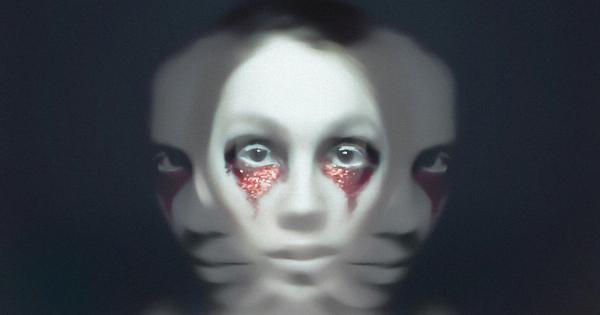As social creatures, humans communicate through language and body signals. Among the physical signals that we send, facial blushing and eye redness are quite common.
Although they may look innocent or even cute, the sudden onset of these symptoms can cause embarrassment or anxiety, especially if they happen in a public or professional setting. In this article, we will explore some of the most common causes of eye redness and blushing, and how to manage them.
Allergies
Allergies occur when the immune system mistakes harmless substances such as pollen, pet dander, or certain foods, for dangerous invaders, and triggers an inflammatory response.
One of the most common symptoms of allergies is eye redness, along with itchiness, swelling, tearing, and sensitivity to light. Eye allergies can be seasonal or year-round, and can affect one or both eyes. In some cases, allergies can also cause facial blushing, especially if they involve the skin.
To manage allergies, people can take antihistamine medications, use eye drops or sprays, avoid known triggers, and keep their environment clean and free of allergens.
Eye Infections
Eye infections can occur due to bacteria, viruses, or fungi, and can affect different parts of the eye, such as the conjunctiva (conjunctivitis), the cornea (keratitis), or the eyelids (blepharitis).
Common symptoms of eye infections include redness, pain, discharge, blurred vision, and sensitivity to light. While eye infections can sometimes resolve on their own, they can also cause complications such as vision loss, scarring, or spreading to other parts of the body. Therefore, it is important to see a doctor if you suspect an eye infection.
Treatment may include antibiotics, antivirals, or antifungals, as well as warm compresses, artificial tears, or eyelid scrubs.
Skin Conditions
Many skin conditions can affect the face and cause facial blushing. Some of the most common ones are rosacea, eczema, and psoriasis.
Rosacea is a chronic condition that causes redness, flushing, pimples, and visible blood vessels, primarily on the nose and cheeks. Eczema (atopic dermatitis) is a type of skin inflammation that causes itching, scaling, and oozing, and can affect various parts of the body, including the face.
Psoriasis is a chronic autoimmune disease that causes scaly patches, itching, and inflammation, and can affect the scalp, the joints, and the face. While these conditions are not curable, they can be managed with topical or oral medications, avoiding triggers, and practicing good skin care habits. Some people may also benefit from psychological counseling or stress management techniques.
Excessive Crying
Excessive crying can cause eye redness and puffiness, as tears contain salt, proteins, and other substances that can irritate the eyes and lead to inflammation.
Moreover, crying can trigger the release of stress hormones such as cortisol and adrenaline, which can cause facial blushing and sweating. Although crying is a natural and healthy way of expressing emotions, excessive crying can be a sign of underlying stress, anxiety, depression, or trauma.
To reduce eye redness and blushing due to crying, people can use cool compresses, drink plenty of water, and take deep breaths to regulate their emotions. Seeking professional help, such as therapy or counseling, can also be beneficial.
Alcohol and Drugs
Alcohol and drugs can cause eye redness and blushing by affecting the blood vessels and nerves that control facial flushing and vision.
Alcohol, in particular, is a vasodilator, meaning that it widens the blood vessels and increases blood flow to the skin, which can cause a red, flushed appearance. Additionally, some drugs such as amphetamines, cocaine, or marijuana, can increase heart rate, blood pressure, and body temperature, which can further aggravate eye redness and blushing.
Overuse or abuse of alcohol and drugs can also lead to long-term damage to the eyes, skin, and overall health, and can increase the risk of addiction, accidents, and interpersonal problems. To manage alcohol and drug-related eye redness and blushing, people can limit their consumption, seek support from family and friends, and consult a healthcare professional if needed.
Emotional Triggers
Emotional triggers such as embarrassment, shame, anger, or excitement can cause eye redness and blushing by activating the sympathetic nervous system, which controls the fight-or-flight response.
When we feel emotional, our body releases adrenaline and other stress hormones, which can increase heart rate, blood pressure, and blood flow to the face, causing a red, warm, or tingling sensation. Emotional blushing and eye redness are normal and usually harmless responses, but they can also cause self-consciousness, self-doubt, or avoidance of social situations, especially if they happen frequently or unpredictably.
To manage emotional triggers of eye redness and blushing, people can practice relaxation techniques such as deep breathing, visualization, or mindfulness, challenge negative thoughts and beliefs, and seek support from mental health professionals or trusted individuals.
Medical Conditions
Some medical conditions can cause eye redness and blushing as secondary symptoms, or as complications of the underlying disease.
For instance, certain autoimmune diseases such as lupus or Sjogren’s syndrome can affect the eyes and cause dryness, inflammation, or sensitivity to light, which can lead to eye redness and pain. Neurological disorders such as multiple sclerosis or Parkinson’s disease can also affect vision and eye movements, and cause eye twitching, redness, or drooping eyelids.
Cardiovascular diseases such as hypertension or heart failure can affect blood flow and oxygen supply to the eyes, and cause a “red eye” appearance. To manage eye redness and blushing due to medical conditions, people should seek medical attention from qualified professionals and follow their treatment plans.
They should also maintain a healthy lifestyle, follow preventive measures such as wearing sunglasses or avoiding smoking, and monitor any changes in their symptoms or vision.
Environmental Factors
Environmental factors such as weather, pollution, or screen use, can also cause eye redness and blushing by affecting the eyes and skin.
For example, exposure to UV rays, dry air, or wind can cause eye irritation, redness, or dryness, especially in people with sensitive eyes or contact lenses. Exposure to air pollution or cigarette smoke can also aggravate eye and skin conditions, such as allergies or rosacea, and cause facial blushing or itching.
Excessive screen use, especially in dim light or close distance, can strain the eyes and cause eye fatigue, dryness, and redness, as well as affect sleep quality and mood.
To manage eye redness and blushing due to environmental factors, people can protect their eyes and skin from harmful UV rays, wear glasses or goggles in dusty or windy environments, cut down on screen time or take frequent breaks, and use eye drops or artificial tears as needed.
Conclusion
Eye redness and blushing can have various causes, from allergies and infections to emotional triggers and environmental factors.
While occasional or mild symptoms are usually harmless and self-limiting, more severe or frequent symptoms may require medical attention and lifestyle changes. To prevent and manage eye redness and blushing, people can practice good eye and skin care habits, identify and avoid triggers, seek support and treatment when needed, and maintain overall physical and mental health.
By acknowledging and understanding the causes of these symptoms, we can reduce their impact on our well-being and social interactions.































